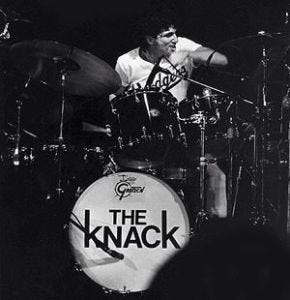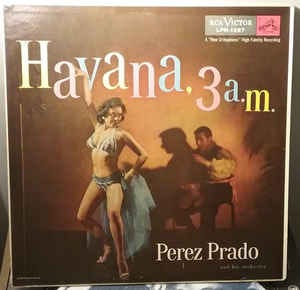He Talks In Stereo, PART 1: Singer/Guitarist Gary Myrick Embraces His Texas Blues Muse-EXCLUSIVE INTERVIEW
With 4 decades of session playing and touring behind him, he's no stranger to playing on others' records. Now, he's exploring his Texas blues roots.
The interview portions have been lightly edited for length and clarity.
“That's The Beginning, Just One of the Clues…”
He started playing music at the age of 10, having also shown an early aptitude for art. By age 14, Gary Myrick was writing his first songs, and by 18, had formed his first all-original band, a sort of glam/pop/punk trio called Smiley.
Gary Myrick was born in Dallas, in a state which has a deep, abiding, and historically significant love for the blues. So does he, as it turns out, but he’s traveled a long and winding road through several decades of playing guitar and singing for other artists, and on many charting hits, some you may know well.
In fact, Myrick’s guitar and voice can be heard as a session player (and touring member) of such acts as Big Audio Dynamite, Jackson Browne, members of The Eagles, Steve Jones (former guitarist of the Sex Pistols), Wilson Pickett, and Stevie Wonder, while serving as supporting act for Bonnie Raitt and Todd Rundgren on respective tours.
“My love for the blues is deep.”
Now, it’s his turn. Myrick has a couple of new releases to rightfully boast about…one’s a spanking new album of blues songs (a couple of covers, but mostly original songs) , as he sings and accompanies himself on a 12-string acoustic guitar. “My love for the blues is deep,” Gary told me recently, “and being Texas-born, it’s a strong influence.”
The other is a collection of concert tapes recently discovered by a hometown radio station from a live gig Myrick’s early ‘80s new wave band played…the band that gave Gary his first worldwide exposure.
Through the magic of the internet, Front Row & Backstage sat and chatted exclusively with Gary, an avid motorcycle enthusiast, in January 2022. If you’re unfamiliar with Gary and his many talents, you’ll discover a highly-sought-after session musician whose music you’ve likely heard before…
And, you’ll also discover a talented vocalist/guitarist who’s currently pickin’ and singin’ the deep Texas blues he was born with…and is finally unleashing.
“You've Had Your First Lesson in Learnin' the Blues”
Fresh out of W.T. White High School in north Dallas, Gary Myrick started playing and gigging in the Dallas-Ft. Worth metroplex in the early-’70s while also taking a 2-year stab at higher education at Dallas College’s El Centro campus, downtown.
“From an early age, I had decided to do music full-time, write songs, sing and play guitar, and produce my own records,” Gary remembers.
Enjoying this bout of reminiscing, Gary continued: “I was doing all my own material in a band called Gary Myrick and Slip of the Wrist. The band went over great, and we were drawing quite well, and being paid the most of any of the bands at the Cellar.
“I played at a club in Dallas called the Cellar, which was quite famous for its wild times: Bouncers with guns…a gun shot off one night, and went right over my head! You had to keep your wits about you!”
Apparently, he’s not exaggerating. According to the Texas State Historical Association (TSHA) Handbook of Texas, “The Cellar had an undertone of violence. Five or six bouncers were usually on hand to throw out anyone who passed out on the cushions [that people would lie on in front of the stage, in lieu of a dance floor]; a side door that opened onto the street was the portal used. The bouncers would really rough people up badly, [and] to break up fights (of which there were many, some instigated by the bouncers), and to protect the waitresses and musicians.”
“I thought it’d be a wild adventure, so I did it!”
Making enough of a name for himself with his guitar-playing and singing, word of Myrick’s prowess spread to Austin, where “Uncle” John Turner (Texas blues legend Johnny Winter’s former drummer), was having his own success with a band called KrackerJack.
Gary: “‘Uncle’ John liked my success in Dallas, and asked me to come join KrackerJack, which I knew was making the most money in Austin doing all their own material. I thought it’d be a wild adventure, so I did it!”
It seems another Dallas native, Stevie Ray Vaughan, had joined and split (in early ‘73) from the Austin-based KrackerJack after less than three months. Enter Myrick to take the eventual Texas blues legend’s place.
“We had some good times down there, and that was when I replaced Stevie Ray Vaughan in the band,” Gary recounted. “Stevie and I knew each other later as we were both signed to Epic Records (Gary’s couple of albums with his early ‘80s Figures band, and a 1983 solo disc; Vaughan’s Double Trouble signed with Epic in March 1983); we did a couple of gigs together out in the Midwest, and Steve came over to my hotel room and we hung out a bit. Sweet guy. We got along great.”
“You're on the Right Track for Learnin' the Blues”
Myrick eventually moved to Los Angeles in the mid-’70s, and formed what became Gary Myrick and the Figures. As most punk/new wave bands in LA were doing at the time, relentless club gigs in and around Hollywood through most of 1979 into 1980 became the band’s order of the day.
Explaining his rationale for moving west, Gary revealed: “I knew I needed to get out of Texas. I wanted to make some records, record and produce my own stuff, so I moved out to Los Angeles, which was…well, smoggy and kind of nuts at the time!”
In the late ‘70s, the chaotic national punk scene ca. 1976-1978 had morphed into sort of a “new wave” amalgam (especially in Hollywood), with a nascent power pop fringe emerging, with their ringing guitars and de rigueur skinny black ties with vests. The Hollywood hair metal scare of the ‘80s (with teased hair and lipstick) was just a couple years away.
“We were on fire and unstoppable.”
As label reps were wont to do in those days, Gary Myrick and his Figures were being doggedly pursued at one gig or another, as record companies were elbowing their way past Hollywood area rope lines to find the newest Devo (signed to Warner Bros. Records in 1978, after a joint endorsement to the label by David Bowie and Iggy Pop) or The Knack, signed to Capitol Records in January 1979 after a ten-label bidding war.
Recorded in April of that year, their landmark debut Get the Knack LP was released in short order, hitting the stores in June. I was visiting LA the week of release, and happened to wander into Sunset Boulevard’s flagship Tower Records at the very moment lead Knack-er, the late Doug Fieger, was checking out the newly-constructed end-cap display of hundreds of the newly-arrived Knack LP surrounding drummer Bruce Gary’s actual Gretsch drum kit!
Fieger and I exchanged a few pleasantries, and I wished him well on the new album…luck, as it turns out, he certainly didn’t need from me!
Myrick: “We were doing really well in Los Angeles, we were on fire and unstoppable, so we got a couple offers from Warner Brothers and [CBS affiliate] Epic.” Minus any superstar imprimatur or massive bidding duel among many, a 29-year-old Myrick and band were ultimately signed to Epic. Their self-titled debut came out in 1980, with a single, “She Talks in Stereo” peaking at #56 in Australia.
To quote that country’s Chartbeats.com.au, re-capping the year’s chart positions from the last week of October 1980: “They might not have made the top 50, but the American band fronted by Texan Gary Myrick achieved something they didn't back home in the US — a top 100 single.” Nevertheless, this song, as well as his 1983 “Time to Win” both made the Valley Girl film soundtrack that year:
Gary elaborates: "My song, ‘She Talks In Stereo’ got me lots of [radio] air play nationwide. Also I wanted to do some little film videos of the band. This was just as MTV was starting to kick in (MTV debuted August 1, 1981), so we started putting videos on MTV. They treated us really nice, and played our stuff a lot, especially VJ, Nina Blackwood. She’s a sweetheart; we’re still in touch all the time. [She’s] a talented VJ who really loves rock ‘n’ roll.”
All the album’s songs were written by Myrick (with the exception of the Kinks’ Ray Davies’ “Who’ll Be the Next in Line”); the album was produced by Myrick and Tom Werman (known for his production on albums by Blue Öyster Cult, Mother's Finest, Molly Hatchet, Mötley Crüe, Twisted Sister, and Poison, among others).
“The production approach was mine,” Gary said about the debut. [Werman] knew I had the sound concept and I expected to co-produce.”
“When You're Out in a Crowd the Blues Will Haunt Your Memory”
As for being the only cover on the debut album, Gary apparently heard what few other listeners (except record industry trade publication, Billboard) heard in The Kinks’ 1965 single, “Who’ll Be the Next in Line”: A “pulsating funky blues rhythm number which rocks all the way.” “Blues”: There’s that word again!
Stephen Schnee of Allmusic.com gave the debut album high marks: “With Myrick's skillful guitar playing (he never overplays), top-notch songwriting skills, and the band's tight dynamic, this was one heck of musical statement.”
By the time of its release, I had re-located from Houston to the San Fernando Valley myself, and was assistant manager of the Glendale location of local retail record chain, Music Plus.
I not only took home and enjoyed a promo copy of the Myrick LP, but was given a promo button by the CBS rep with replica artwork (drawn by Gary himself) of the album’s front cover art. Plus, I did my part to recommend the album to buyers who had selected records by artists similar in genre.
Here’s a sample of an Epic full-page print ad for the rock press and industry trade publications of the day. It features Gary appearing to paste his personally-designed cover artwork to a wall (being careful not to obscure upcoming tour dates, of course!), with ad copy blaring, “Figure on Gary Myrick and the Figures…The Band with Designs on Tomorrow”:
The second Gary Myrick and the Figures album, Living in a Movie, came out in 1981, and was produced by another veteran knob-twirler, the late Geoff Workman (The Cars, Queen, Journey, Foreigner, Toto, and Mötley Crüe). I not only enjoyed the contents of that promo album, but had fun taking home the attendant 7” Epic Records promo film canister, with single inside:
With this spate of promo items (and any number of 3-and 4-song promo 7” EPs) thrust regularly at radio, Epic was clearly working Myrick and the Figures (in the states, anyway) to a degree they certainly didn’t with Northern Ireland’s Starjets just a year before, about whom more can be read here.
“I’m Not a Number” is the first track from that second album, and this is a 1981 live performance of that song. It was included (with several bonus live tracks) in the remastered CD reissue on Sony (CBS) affiliate, Wounded Bird Records, the label that recently re-issued Gary’s first three Epic releases on CD:
“It’s really all the same creative energy!”
Gary took a moment to describe how he employs his artistic talent as it relates to his music: “As for my artwork, I’ve always expected to include it in my music by doing all of my album covers throughout the years. I consider certain fashion things that I enjoy as part of my design sense.
“Designing music, designing art, design and guitars,,,,and so on, conceptualizing a band’s lyrics, on and on; it’s really all the same creative energy!”
Indeed, Gary has designed the cover art for all ten of his album releases, including this, his third Epic album (and first solo), 1983’s Language, on which is featured his original artwork, “Golden People From the Perfect Planet”:
“You'll Walk That Floor and Wear Out Your Shoes”
Having disbanded The Figures after two albums, a couple Myrick solo albums (one for Epic, 1983’s aforementioned Language, and one for Geffen Records in ‘85, Stand for Love) were sandwiched around session work for John Waite’s second post-Babys solo album in 1984, No Brakes (on EMI America Records in North America).
Waite and Myrick “were put together by my manager,” Gary told me, “and we were actually starting a band with a band name; that album was never supposed to be a John Waite [solo project],” he disclosed.
That “band with a band name,” history reflects, happened just four years later, of course, in 1988, as Waite joined veteran bassist Ricky Phillips, Journey’s Neil Schon, Jonathan Cain, and Deen Castronovo, in forming supergroup Bad English.
Myrick landed four songs on No Brakes, which was recorded in the fall of 1983 at London’s Abbey Road Studios. Two of those were co-writes with Waite, the lead-off track, “Saturday Night,” and “Euroshima,” while the other two were co-writes with Waite, bassist Donnie Nossov and 1990s Boston drummer Curly Smith, “For Your Love,” and “Love Collision.”
The album’s “Missing You” went to the top of the US Singles Charts in the summer of ‘84, propelling No Brakes into the Top 10 of the Album Charts. In his review of the album for Allmusic, Stephen Thomas Erlewine proclaimed No Brakes “rocked like a bastard, particularly on the opening cut, [Waites’ and Myrick’s] ‘Saturday Night,’” with Gary’s frenzied but focused fretwork front and center…and right off the bat:
Jackson Browne asked Gary to play guitar on “For America,” the lead single from his 1986 Asylum Records Lives in the Balance album, his eighth for the label. The single made it to #30 on Billboard’s Hot 100 chart, with Gary’s made-to-order angular guitar figure all but personifying Browne’s lyrical urgency.
Hard to believe Browne never heard Gary’s work on his and Waite’s “Saturday Night”! He had to have, and a steady stream of custom requests for his consistently riveting guitar sound started lining up at Gary’s door.
“When You Feel Your Heart Break, You're Learnin' the Blues”
Next on Myrick’s docket was being tapped to tour with former Sex Pistols guitarist Steve Jones, supporting Jones’ debut solo LP, Mercy, as they opened for the Kinks in 1986. Jones had handled all the guitar work in the studio, but called on Gary to share guitar chores in their shows.
Off the road, and back in LA, Gary met up with former Clash bass player, Paul Simonon and Nigel Dixon from UK rockabilly band, Whirlwind. Writing songs together, they formed Havana 3am (named after Cuban bandleader and mambo king, Pérez Prado’s 1956 album), marrying rock with “Latin and Mexican music, The Ventures, and spaghetti westerns,” to hear Simonon describe their sound.
After a year, Havana 3am moved to London to tour Europe and Japan. Eventually, they recorded their self-titled debut in Tokyo in 1991 for IRS Records. With intentions to record a follow-up, Dixon succumbed to cancer. Gary returned to LA to fashion an homage to their fallen bandmate as Gary Myrick and Havana 3am, with the album, Texas Glitter and Tombstone Tales for Burnside Records in 1996.
In the late ‘90s, Gary started composing for films and commercials while working on new music. Moving a bit towards roots rock (acoustic country and yes, blues), he stripped down his approach for his solo album, Waltz of the Scarecrow King (2001). 2004’s self-released Reinvent the Gods featured a cover of The Rolling Stones’ (and Marianne Faithfull’s) “As Tears Go By.”
Read PART 2 of “He Talks in Stereo”! In PART 2, we’ll hear from Gary about the recently unearthed live tapes from 1980, and his new blues album with original songs played on a custom 12-string steel guitar:
He Talks In Stereo, PART 2: Singer/Guitarist Gary Myrick Embraces His Texas Blues Muse-EXCLUSIVE INTERVIEW
In “He Talks in Stereo, Part 1,” FRONT ROW & BACKSTAGE spoke with Gary Myrick, as we filled in the many highlights in his 4-decade-long career recording his own material. Myrick also has an impressive track record of well-known rock artists who specifically asked for his distinctive guitar-playing to augment their records, as well being hired as the occ…
Lyrics used as periodic sub-headlines are from “Learnin’ the Blues,” composed by Philadelphian Dolores “Vicki” Silvers in the early 1950s.











